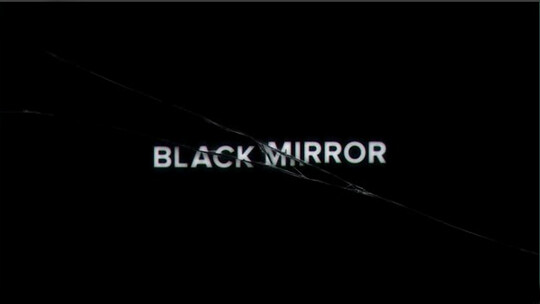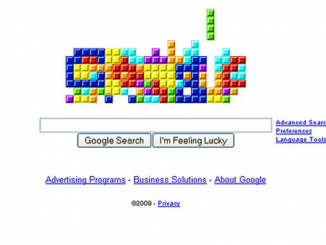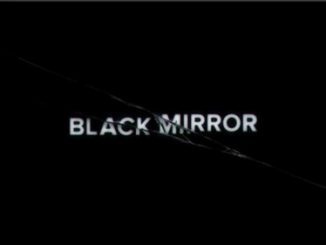
Warning: This article contains spoilers and offensive language.

The sci-fi, thriller television series Black Mirror poses this question to its audience — what is the future of technology? It presents to viewers imaginaries of future digital transformation and its effect on society. Each episode follows a different story and different characters who struggle against the effects of technology in their world. In this article we will explore the ways in which Black Mirror has forecasted the future of technology in relation to various issues including platformization, digital capitalism, the digital divide, monopolisation, data exploitation and augmented reality. Additionally, the article aims to investigate the show’s commentary on our present technological transformations and its social, economic and political effects.
Nosedive (Season 3, Episode 1) and the Future of Platformization, Digital Capitalism and the Digital Divide
Platforms such as Google, Apple, Facebook, Amazon and Microsoft (GAFAM) are very powerful and influential entities considering their dominance and monopolisation of the market (Borowska, 2020). Nieborg & Poell (2018) describe the increased dependancy of cultural production on few platforms — namely GAFAM. They point out the effects of this phenomenon on accessibility and inequality due to their overwhelming influence (Nieborg & Poell 2018).
This episode of Black Mirror question’s what might happen if one platform became so powerful they managed to completely determine the way society is run.
Black Mirror Nosedive Featurette [HD] from Netflix. Source: YouTube – https://www.youtube.com/watch?v=2SybklT8k1k
In this society, people’s ratings determine essentially every aspect of their lives including where they can live, work, how they will be respected by others. This world, therefore, operates entirely on digital capitalism, whereby economic and social activity is dependant on exchanging data, in regards to the communal rating system (Schiller, 1999).
An interesting take away from this episode is its commentary on digital inequality. Those who do not participate in the system are outcasted due to their low rating and (consequently) their inability to work at a high paying job.
There are some parallels to the real world in terms of digital inequality whereby social stratification has become further reinforced by unequal access to the internet (Ragnedda, 2017). The Digital Economy Report by the United Nations Conference on Trade and Development (2019) wrote:
“The growing power of digital platforms has global implications that are likely to accentuate inequalities” (The United Nations, 2019, p. 82).
Without access to the internet, the likelihood of gaining upward economic mobility is deteriorated (Mracek, 2018). Additionally, Silicon Valley bro-culture perpetuates a fundamentally unsympathetic stance to minority groups in society mainly due to the overwhelmingly white, male, middle class employee demographic (Lusoli & Turner, 2021). In developing countries only 1 in 5 people are online and it is partially the responsibility of governments to ensure they don’t get left behind (Opp, 2021). For example, the Digital India Programme aims to digitally empower their citizens to help lessen the social and economic impacts which are exacerbated by a lack of connectivity (Digital India, 2021).
Thus, this episode comments on the extraordinary influence of platforms and how it has transformed our social, economic and political landscape through the thrilling story of a society run by one.
Smithereens (Season 5, Episode 2) and the Future of Platform Monopolisation and power disparities
Smithereens follows the story of Chris Gillhaney who takes an intern from a large social media company called ‘Smithereens’ hostage. He does this to blackmail the company into putting the CEO, Billy Bauer, on the phone with him. We find out in the end that he wants to confess to Billy that he crashed his car and killed his fiancé whilst looking at his Smithereen feed on his phone.
Black Mirror: Smithereens Official Trailer by Netflix. Source: YouTube – https://www.youtube.com/watch?v=2SybklT8k1k
As the police and the employees of Smithereen try to dig up information on Chris, we find that there is a very stark power disparity between them. The tech company had more information on Chris’ background in mere minutes than what the police could. This was because they were able to almost instantly dig up all of his personal and user data across many online platforms – what Billy Bauer called invoking “God mode.” Billy wears a long white robe and sandals, he is also, at the beginning of the episode, meditating on top of a mountain in the middle of a desert. Chris repeats throughout the episode that it will be his last day, and it seems as though he is represented as a sinner confessing himself to Jesus Christ.
This comparison may be laughable to some, but its undeniable modern day tech leaders do possess unnatural amounts of power. Pesce (2017) goes as far as to say:
“Zuckerberg could be the next US president, if he wants it. With money and almost unimaginable influence, in the last days of reality that prize—and much else besides—is his for the taking” (Pesce, 2017, p. 81).

Tech companies have exploited their overwhelming influence and power in regards to user-related data. FaceBook accounts for 71.8% of social media sites visited in May 2021 and has a total of 2.89 billion users (Statista, 2021). Digital technology platforms like Facebook have such power due to many reasons including: monopolisation, multi-stakeholder governance, lobbying powers, high user engagement strategies (including complex algorithms), and the limited regulation (and thus responsibility) they have in terms of content production due to their intermediary business model (Gillespie, 2018). Events such as the Cambridge Analytica Scandal (2015) have publicly exacerbated this and contributed to the growing techlash phenomenon, whereby the public’s trust in the tech sector has significantly declined (Flew, 2019).
In summary, this episode comments on platform monopolisation, datafication, and the transformation of power disparities between tech companies and the government.
Five million merits (Season 1, Episode 2) and the Future of Augmented Reality

Imagine a world where everything is virtual.
In Five Million Merits, most of society has to cycle on exercise bikes in order to earn ‘merits’ which function similar to money which affords them food, and other essential and non-essential items. People exist through their ‘doppel’ (a virtual avatar) in which they can play games and attend talent shows.
Bingham lives within walls, mostly covered by interactive screens. The idea for this episode originated from co-writer Konnie Huq who jokingly thought her husband (and also co-writer of this episode) would be happy if every wall was an Ipad screen (Channel 4, 2011).
Jones (2020) suggests that we now live in:
“the era of the compulsive screen [whereby] we are encouraged in the context of both work and pleasure to endlessly navigate the screens of our smartphones, laptops, desk- top computers, and tablets” (Jones, 2020, p. 92).
It’s not hard to imagine a world in which real and virtual space is shared. The recent Pokemon Go game is an example of how our physical space can be transformed by augmented reality. Additionally, Mark Zuckerberg pitched augmented reality as the future of Facebook (Hern, 2017). As Pesce (2017) suggests, augmented reality has become different to its earlier imaginaries. Entering a virtual reality does not necessarily mean putting on some sort of headset like William Gibson’s vision in Neuromancer (1984), but simply looking “through the screen of your smartphone” (Pesce, 2017, p. 74).

Augmented reality changes the physical space. If you change the space you change the behaviour of those existing in it. In terms of Pokemon Go, places which were deemed as vital gaming points were overwhelmed by hundreds of gamers. Peg Paterson Park was one of these places which had such an impact on residents an update in 2016 removed that particular stop from the game (Wicks, 2016).
Thus, in this episode, people became more accepting of their bleak environment — their physical surroundings became more than merely a bed, bathroom, workout room — it became a game. But for Bingham, towards the end of the episode, it becomes unbearable:
“All we know is fake fodder and buying shit. That’s how we speak to each other, how we express ourselves is buying shit. I have a dream? The peak of our dreams is a new hat for our doppel, a hat that doesn’t exist. It’s not even there, we buy shit that’s not even there.”
Thus, this episode has critiqued the future of augmented reality and its ability to blur the lines between what is real and what “doesn’t exist” and its impact on social and economic behaviours.
To conclude, Black Mirror raises important questions about where technology is taking us as a society in the alarmingly near-future and the impact this will have on our social, economic and political landscape. It incorporates themes such as platformization, digital capitalism, the digital divide, monopolisation, data exploitation and augmented reality to parallel story lines to our present day digital transformations. It leaves you to guess, where are our technological advancements taking us?
References
Borowska, K. (2020). The Monopoly on Technology and How to Defeat It. Forbes. https://www.forbes.com/sites/kasiaborowska/2020/12/15/the-monopoly-on-technology-and-how-to-defeat-it/?sh=10558df521af
Channel 4. (2011, November 7). Black Mirror: Charlie Brooker interview”. Archived from the original on 25 May 2017. https://web.archive.org/web/20170525124602/http://www.channel4.com/info/press/news/black-mirror-charlie-brooker-interview
Digital India. (2021). Vision and Vision Areas. Government of India. https://www.digitalindia.gov.in/content/vision-and-vision-areas.
Flew, T. (2019). The Crisis of Digital Trust in the Asia-Pacific: Commentary. International Journal of Communication (Online), 4738–.
Fontaina, J. (2018). Black Mirror: Nosedive Analysis. Medium. https://medium.com/@jfontaina/black-mirror-nosedive-analysis-1bc219e8bd13.
Gillespie, T. (2018). Governance by and through Platforms. In Jean B., Alice, M., & Thomas, P., The SAGE Handbook of Social Media (pp. 254-278). London: SAGE Publications
Hern, A. (2017). Eight visions of Facebook’s future from its F8 conference. The Guardian. https://www.theguardian.com/technology/2017/apr/19/facebook-f8-conference-mark-zuckerberg-augmented-reality
Jones, N. (2020). IMMERSION: Entering the Screen. In Spaces Mapped and Monstrous. New York Chichester, West Sussex: Columbia University Press. DOI: 10.7312/jone19422.10
Lusoli, A & Turner, F. (2021). “It’s an Ongoing Bromance”: Counterculture and Cyberculture in Silicon Valley—An Interview with Fred Turner. Journal of management inquiry, 30(2), (pp. 235-242). Los Angeles, CA: SAGE Publications. doi:10.1177/1056492620941075
Mracek, K. (2018). What Is the Impact of the Digital Divide?. Federal Reserve Bank of St. Louis. https://www.stlouisfed.org/open-vault/2018/november/impact-of-digital-divide
Netflix. (2016, October 13). Black Mirror Nosedive Featurette [HD] Netflix [Video]. YouTube. https://www.youtube.com/watch?v=R32qWdOWrTo
Netflix. (2019, May 22). Black Mirror: Smithereens Official Trailer Netflix [Video]. YouTube. https://www.youtube.com/watch?v=2SybklT8k1k
Nieborg, D. B., & Poell, T. (2018). The platformization of cultural production: Theorizing the contingent cultural commodity. New Media & Society, 20(11), 4275–4292. https://doi.org/10.1177/1461444818769694
Opp, R. (2021). The evolving digital divide. United Nations Development Programme. https://www.undp.org/blog/evolving-digital-divide
Pesce, M. (2017). The last days of reality. Meanjin (Melbourne, Vic. : 1977), 76(4), 66-81. Melbourne: Melbourne University Publishing Ltd
Ragnedda, M. (2017). The Third Digital Divide: A Weberian Approach to Digital Inequalities (1st ed.). Routledge. https://doi.org/10.4324/9781315606002
Schiller, D. (1999). Digital capitalism : networking the global market system . MIT Press.
Statista. (2021). Facebook MAU worldwide 2021. Statista Research Department. https://www.statista.com/statistics/264810/number-of-monthly-active-facebook-users-worldwide/#:~:text=With%20roughly%202.89%20billion%20monthly,network%20ever%20to%20do%20so
Statista. (2021). Most famous social media sites in the U.S. Statista Research Department. https://www.statista.com/statistics/265773/market-share-of-the-most-popular-social-media-websites-in-the-us/
The United Nations Conference on Trade and Development. (2019). The Digital Economy Report. United Nations. https://unctad.org/system/files/official-document/der2019_en.pdf
Van Dijck, J., Poell, T. & de Waal, M. (2018) The Platform Society. Oxford: Oxford University Press, pp. 5-32 (‘The Platform Society as a Contested Concept’).
Wicks, K. (2021). Pokemon GO: All Pokestops removed from Peg Paterson Park at Rhodes. The Sydney Morning Herald. https://www.smh.com.au/technology/pokemon-go-all-pokestops-removed-from-peg-paterson-park-at-rhodes-20160801-gqio00.html


